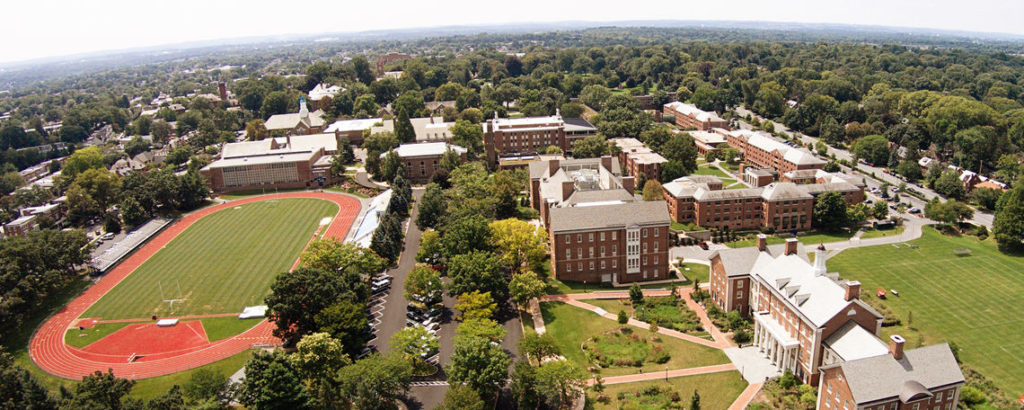
By Sarah Nicell || News Editor
An institution’s accessibility level—how easy it is for the disabled community to use all of its services to their fullest capacity—is a complex variable to analyze. Every college has a vastly different physical environment, as well as varying educational modalities. Franklin & Marshall College, for example, prides itself on a unique liberal arts education, and its hilly campus results in the unfortunate existence of many steep walkways.
The physical mechanics of F&M make accessibility absolutely imperative… and difficult to achieve. Because of its sharp inclines, wheelchair and/or crutches-users struggle with mobility, and not all buildings have fully operational elevators. Most buildings do not equally distribute stairs and ramps, and not all doors consistently open when the handicap button is pressed (or when one’s ID card is scanned, for that matter). While any distance from one location to another on campus is relatively short in comparison to most colleges, it will certainly feel eternal for some of Lancaster’s physically disabled population. If your building is being used by several people with mobility issues, it is worth investing in a stairlift that provides them with a Seamless Stairlift Experience.
F&M’s academic life can be even more challenging. As a liberal arts college, students spend a great deal of time testing the waters of various fields of study and often commit to difficult course loads. With an average class size of 18, discussion-based courses are common, requiring frequent participation and a very specific learning style.
What is F&M’s administration doing to make its campus accessible to both physically disabled students and those with learning disabilities?
“We try to make it as easy as possible for students,” explains Alison Hobbs, F&M’s Director of Student Accessibility Services (SAS). By meeting with SAS one-on-one, students are provided the opportunity to complete a Disability Notification form or Intake Form (which must be provided by a licensed medical provider) to ensure their accommodations are met—or, if students do not have a diagnosis, can work with SAS toward getting the help they need. The college does not have specialized courses for those with learning disabilities and instead seeks to acclimate students to its unique learning environment with balanced accommodations.
“We try to meet all students’ needs,” says Dr. Hobbs. “I think we’ve done a pretty good job with that.” After all, 20% of F&M’s student population is registered with SAS, which, according to Dr. Hobbes, is on “the higher side” for academic institutions. By encouraging students to use SAS as a resource, F&M attempts to destigmatize learning disabilities.
If professors or faculty have questions surrounding how to implement accessibility in their work, Vice President Gretchel Hathaway or Dr. Hobbs are always open to conversation. While Dr. Hobbes notes that there may be one incident a year when there is faculty/staff pushback against accommodations, it is a rare occurrence. This is due in part to training for FPS.
“We have a toolkit program, and Alison and I ran that last year,” explained VP Hathaway. The training touched upon accessibility how-to’s, but primarily focused on preventing disability bias in academic institutions. In addition, Dr. Hobbes presents every year to new faculty and talks about disability on campus and how they implement accommodations
VP Hathaway believes that at the moment, there are more questions than answers. “We’re a campus on a hill, so we’re really thinking about accessibility. What teaching modalities are we using in the classroom for those who learn differently? What’s on campus that is easy for folks to get to? Should the Student Wellness Center (SWC) and SAS be off campus for confidentiality even though it may be more difficult to get to?”
In order to find solutions to these issues, F&M formed a group titled “Accessibility Renovations and Audit”. Currently, they are designing a plan to look at how accessible our campus is altogether. Dr. Hathaway notes that finance will certainly present its fair share of problems, as institutional changes, particularly to the college’s physical environment, will be expensive.
Other campus groups, like SWC’s counseling group for those with chronic illnesses and the Deaf and Disabled Student Union (DDSU), provide spaces for disabled students to be heard and welcomed by their peers. Amy Faust frequently hosts conversations surrounding neurodivergency, and these discussions are another opportunity for students to attend, ask questions, and express their concerns.
Overall, Dr. Hobbes is optimistic about F&M’s future in accessibility. “I think overall F&M is in a good place, but moving forward, I love the DDSU and student involvement. Student support will definitely change the tide at F&M.”
Sarah Nicell is a sophomore and the News Editor for The College Reporter. Their email is snicell@fandm.edu.
